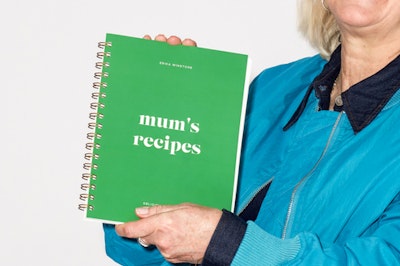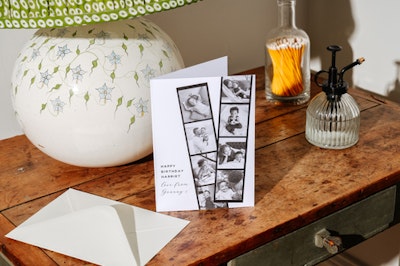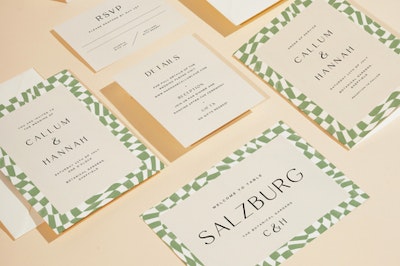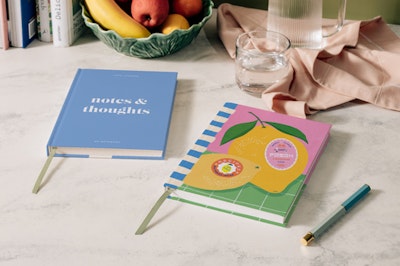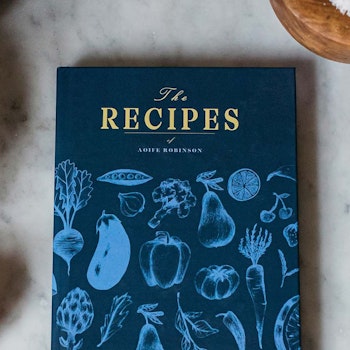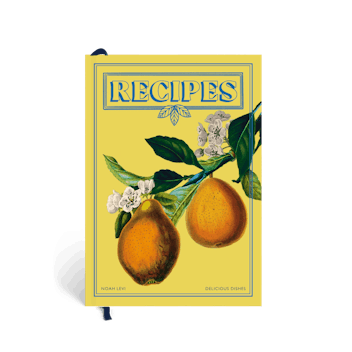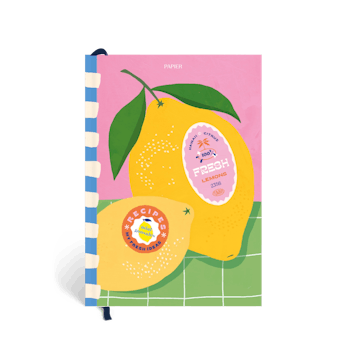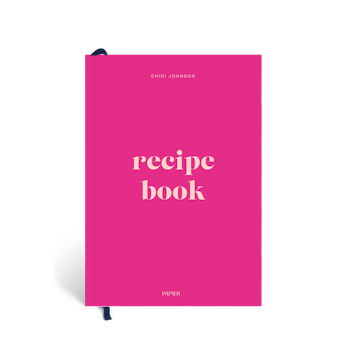Food is about so much more than sustenance. Cooking is a way to connect with the people you love, a simple method of self-care and an opportunity to express your creativity. That’s why we’ve created a collection of Papier recipe journals. Using a recipe journal prompts you to remember family favourites, customise classic meals and design new dishes from scratch. Putting pen to paper cooks up a kitchen keepsake, a paper home for your favourite flour-dusted memories – from licking birthday cake batter straight from the bowl to fighting your friends for that last spicy fajita.
We’ve pulled together some tips and tricks for recipe journaling, so you’ll want to keep coming back for more. Once you’ve filled the pages with tried-and-true recipes, most-loved stores and favourite restaurants, you’ll have your own personal cookbook. Keep your culinary secrets safe, or share your recipe journal with generations to come.
1. Inspiration is everywhere
It’s easy for mealtimes to become monotonous. Making the same dishes every day can turn cooking into a chore. Using a recipe journal encourages you to get out of a rut with your meals and discover new things to eat. Challenge yourself to find fresh culinary delights – ask friends for their most-made dinners, try recreating your favourite restaurant meals or put your own spin on your dad’s secret recipe. Once you’ve started to fill the pages with delicious dishes, try making something different every day. Eating a varied diet isn’t just about keeping things interesting; it’s nutritionally beneficial to consume a diverse range of foods. Variety is the spice of life.

2. Personalise your plate
Whether you’re vegetarian, gluten-intolerant or just hate coriander, a recipe journal is a great way to customise meals. On each recipe page you can tick off dietary requirements – vegan, vegetarian, gluten free or dairy free – so you can see at a glance who can eat your dish. When dealing with food intolerances, allergies or preferences, you can get stuck mourning meals you’re missing out on. Adapting recipes allows you to discover new ways to eat your favourite foods. Experiment with turning a mac and cheese vegan, try making a gluten-free pizza dough or find a new herb to flavour guacamole. Note down your recipe wins and fails, just in case you come up with a new classic.
3. The magic of memory
Think about your most-loved, most-cooked meal that you always devour. Now ask yourself – why is it your favourite? Very often, the food we love isn’t just about our taste preferences. Do you crave fried rice because your grandparents made it for you as a child? Do you always make prawn linguine after eating it on holiday in Italy? Once we start recreating recipes over and over again, we can lose touch with why we treasured them in the first place. There’s plenty of space in our recipe journals to note more than the instructions – use the pages to reconnect with the memories associated with your favourite meals. Every bite will taste a little sweeter.

4. Delight in the details
Creating an atmosphere to match the mood of your meal turns even a speedy weeknight supper into a special occasion. You can use your recipe journal to remember which thoughtful details will take your dinner from everyday to extraordinary. Write down your preferred condiments, sauces or tasty sides. Make notes on styling details that enhance the meal, such as tableware, floral arrangements or menus. Don’t forget about drinks – from a spritz to a sauvignon blanc, writing down matching beverages can make planning a dinner party that much simpler. Finally, set the tone with music. Whether it’s one song or a playlist, remembering the tunes you heard at the table will make every meal more memorable.
5. Design new dishes
Cooking is a great form of creative expression, and you can use a recipe journal to track your culinary works of art. Try setting yourself a challenge by picking out random ingredients, using whatever is in the fridge or combining some of your favourite dishes – we wouldn’t have cronuts without a little creativity. You could also focus on the presentation. Take time to plate your food carefully and play with elements such as colour, height, texture and garnishes. Our recipe journals have options to rate the dish – so you can remember if your artistic invention was a fail or a feast.
6. Spice up your life
Sometimes a dish can be good, but not great. Editing existing meals from cookbooks or friends’ recipes will make you want to keep creating. Small tweaks can have a big impact on your taste buds. If a dish was too spicy, halve the amount of chilli. If something was too sweet, try a squeeze of lemon. The more you experiment, the more you’ll learn. We love to keep a list notepad on hand in the kitchen to ensure the pantry is always stocked with essentials. Remember to add ingredients in small increments, and always taste as you go.

7. Best-laid plans
Never stare into an empty fridge again. When you have an index of tried and tested recipes to turn to, it’s easier to stay organised by planning your meals. Our weekly desk planners are a great way to see your week on one page, allowing you to plan what to cook when you’re home. For days you don’t want to wear the chef’s hat, your recipe journal still has you sorted. There are pages at the back for you to fill with most-loved stores, favourite restaurants and places you’ve been wanting to try. Consult your personal list to find the address of that backstreet bar or hidden diner, and leave the dishes to someone else.

8. Connect through cooking
There’s nothing like a home-cooked meal made by someone you love. Gather your nearest and dearest and ask them to each bring their favourite dish, then write recipes on notecards to swap at the end of the meal. Or whip up a big serve of something to share, writing down who was at the table in your recipe journal. The next time you make that dish, you’ll be reminded of who you dined with. Breaking bread together puts everyone on the same page, and can help create memories that will linger long after your last bite.
Feeling hungry? Find your recipe journal today.


